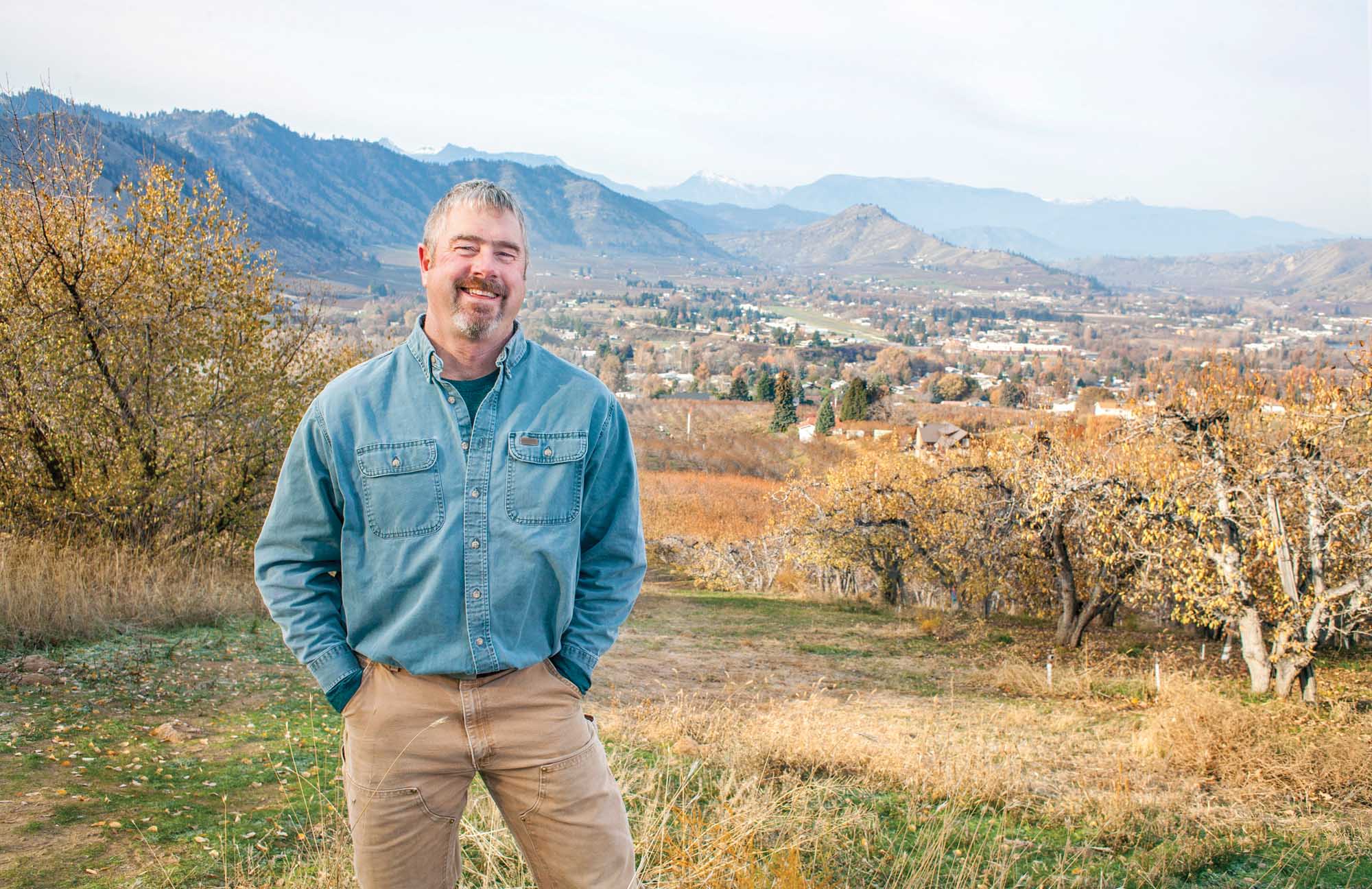
Pear grower, Ray Schmitten overlooking Cashmere, Washington in 2014. Through his childhood, Schmitten would walk this orchard row to get to school at the bottom of the hill in downtown Cashmere. (TJ Mullinax/Good Fruit Grower)
Orchardist Ray Schmitten, recipient of the Washington State Horticultural Association’s 2014 Silver Pear Award, is not a person who likes to sit still.
He’s always been involved in multiple ventures since he graduated from college in 1985 and began working with his father, Bud Schmitten, on the family orchard in Cashmere, Washington.
“My dad, when he asked me to be involved in the orchard, said part of the deal was I had to work for another company for five years.”
And that suited Schmitten.
“How else do you learn?” he asked. “Not by being in the confines of your own little world. It’s very hard to learn things without going out and experiencing them.”
His first outside job was as a fieldman with Chamberlain Distributing, an orchard supply company in Wenatchee. He went on to work for Dovex Fruit Company and most recently for McDougall and Sons, where he was both a fieldman and orchard manager.
After McDougall purchased Barden Farms in Monitor, Schmitten was given the challenge of replanting the old Red and Golden Delicious orchard with newer apple varieties and cherries.
Meanwhile, he continued to operate the family farm and lease other orchards. His acreage has increased from 35 acres in 1987 to 180 acres today, with 90 percent planted to pears.
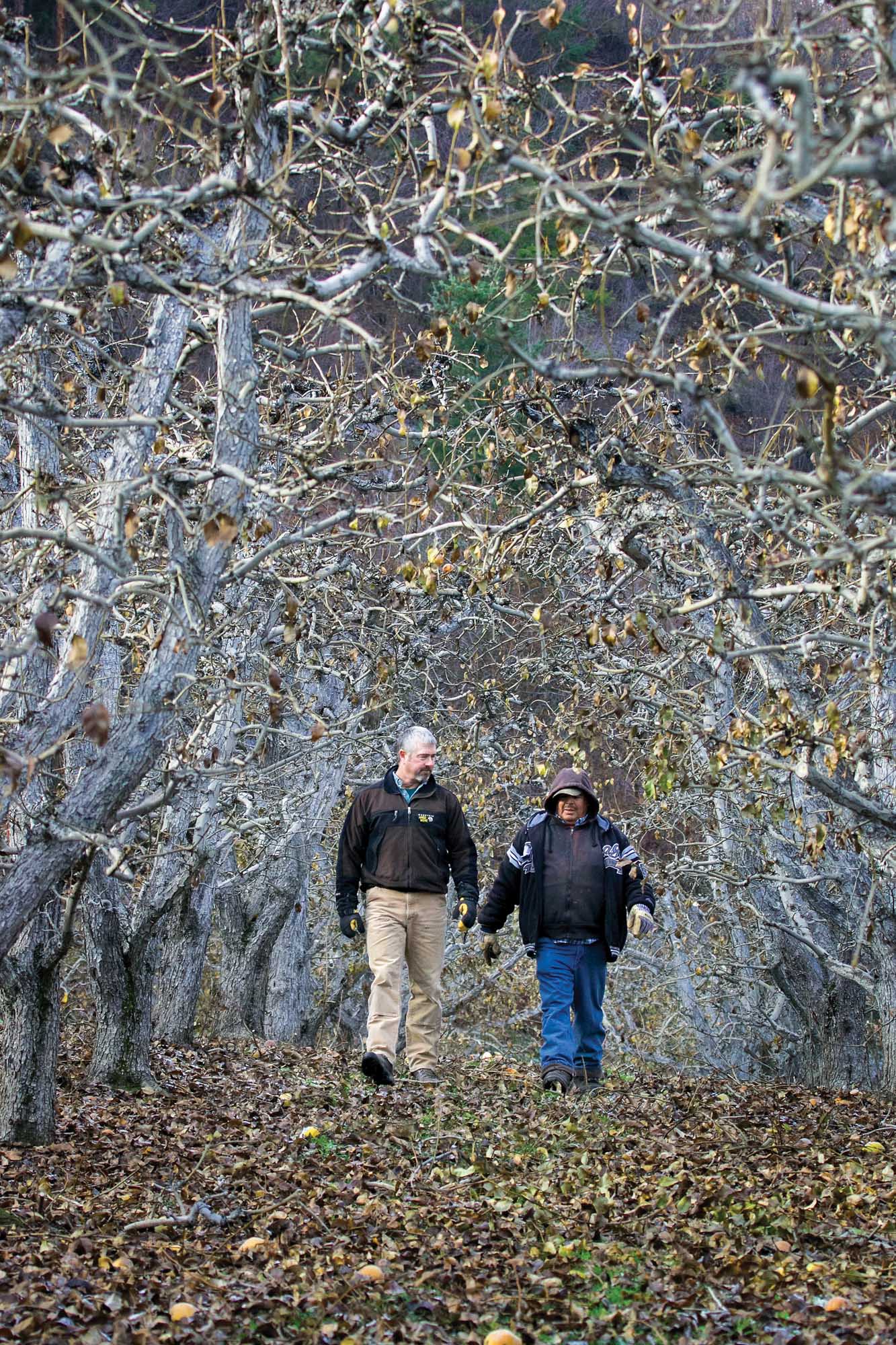
Ray Schmitten (left) and his long-time employee Antonio Maldonado prepare for the pruning season. Schmitten says traditional orchards of d’Anjou and Bartletts can still be profitable. (TJ Mullinax/Good Fruit Grower)
In addition, he’s been involved in a number of businesses. He was a partner in the packing company Cashmere Fruit Exchange from 1995 to 2002. He later had ownership in Cascade Powder Cats, a company that offered guided backcountry skiing expeditions with accommodation at a yurt lodge in the Chumstick area. He sold the business four years ago to spend more time with his family.
He and his wife, Trish, still operate a Laundromat in Cashmere and recently joined their eldest son, Ryan (27), in a business growing marijuana. Their second son, Mike (24), works with Schmitten at the orchard, and they have two younger sons, Tyson (14) and Rolland (11).
Schmitten said he and his wife can’t help but get interested and excited in new ventures.
“We’re a little ADD,” he said. “We were blessed, both of us, with a work ethic, and a lot of times we don’t know when to say no. And that’s a bit of a challenge.”
Research
Besides juggling various jobs and businesses, Schmitten has devoted a lot of time to representing the pear industry in research matters. He was on the board of the Washington Tree Fruit Research Commission for five years, has been on the board of the Pear Bureau Northwest for almost 10 years, and has served on the Fresh Pear Committee for 21 years.
Kevin Moffitt, president of the Pear Bureau, said Schmitten is fair and grounded in his opinions and leads with vision. “Ray has a true passion for pears and continues to be an asset to the entire pear industry.”
Schmitten has been on the research subcommittee for 19 years, and has chaired the committee since 2005. He is now co-chair with Bob Gix.
“I do think that you really need to pay back to the industry for what you’ve gained,” he said. “And there are rewards to that. Being involved, you gain information and make acquaintances and friendships that you otherwise would not.”
Gix, horticulturist with Blue Star Growers in Cashmere, has known Schmitten ever since he started doing field work 30 years ago. He said Schmitten is a phenomenally easy person to work with. He can quickly grasp the situation and identify what the challenges will be and who will be the best person to tackle the research. He has a good understanding of both research and industry priorities and needs.
“He’s a great individual to work with,” he added.

Ray Schmitten’s great-grandfather, Fred, built a saw mill near Cashmere in 1902 and founded the Schmitten Lumber Company. He had a factory that supplied wooden boxes to the tree fruit industry until the switch to cartons in the 1950s and 1960s. This lumber truck was used on the orchard up through the ’60s. (TJ Mullinax/Good Fruit Grower)
Schmitten said he personally thinks finding a dwarfing pear rootstock is the top research priority.
The Malling 9 rootstock has enabled apple growers to plant trees more densely and improve efficiency, but there is still no dwarfing rootstock for pears. Pear growers need to be able to modernize their orchards and grow smaller trees so pickers can use shorter ladders. There’s a limited labor force that will harvest pears from 10- to 12-foot ladders because it requires some athleticism, he said.
Schmitten has a four-year-old experimental block with d’Anjou and Bartlett trees spaced two feet apart with ten feet between rows. The trees are on Old Home by Farmingdale 87 rootstocks. Although early production has been high, shading soon leads to blind wood and low spur density. He’s concluded that with OHF 87, a 6- by-12 foot spacing is as tight as he wants to go.
He feels confident that as rootstock breeders gain a better understanding of the genetics that control dwarfing, they’ll be able to develop genetic markers to speed up the process of developing fully dwarfing pear rootstocks.
“Until then, I think we have to use horticulture to keep the trees small,” he said.
Change
Economically, pear growers in the Wenatchee River Valley don’t have a great incentive to change their orchards. Many still have blocks with trees spaced 20 feet apart that are still very profitable.
“It’s real hard for me to convince the bank that I need to start cutting this out and replanting new pear orchards when I won’t get a return on that piece of land for seven years,” he said.
“But,” he added, “the labor problem is breathing down our necks terribly, and I think that will be one of the things that will change how we do things.”
Another motivation for change is pest control, because managing pests is more difficult in big, old trees.
Schmitten said pest control last season was the worst he’s seen in almost 30 years. Efficacy of the pesticides used is declining because of resistance and new products target specific pests, unlike the old broad-spectrum organophosphates.
“So, you may control pear psylla, but stinkbug might pop up and you might control stinkbug, and mealybug pops up,” he said. “It’s a very complicated pest dynamic out there.”

Ray Schmitten’s license plate demonstrates his commitment to the pear industry. (Courtesy Ray Schmitten)
Meanwhile, the cost of controlling pear pests has increased. Schmitten spends about $1,200 per acre on pest control now, up from a mere $200 an acre when he began farming. The new products are safer for people and the environment, he said, but they make it harder to control the insects.
Schmitten plans to install an overhead irrigation system, as well as drip, in all his future plantings so that he can wash the honeydew off the pear psylla and make them more vulnerable to pesticides.
Varieties
He does not see new pear varieties as a research priority, although he thinks Gem, which was recently developed by the U.S. Department of Agriculture, is a great pear.
He’s concerned about the ability to secure shelf space at the retail store for a new variety and says a packing company would have to build a promotion and marketing program before he’d feel comfortable planting it.
‘I know I can sell d’Anjous and I know I can sell Bartletts for a profit,” he said.
Schmitten believes there’s work yet to be done to ensure that d’Anjou and Bartlett pears are both edible and attractive when they reach the consumer. Ripened pears can easily be bruised and damaged, so it might take new types of packaging to protect the fruit.
He and his wife have done in-store sampling with the Pear Bureau several times in stores in Florida and Colorado and learned the importance of good eating quality.
“That’s really rewarding,” he said. “That’s where you really learn that when people get a ripe pear there’s nothing that beats it. It’s a delicacy. I feel our pears are an heirloom product.” •



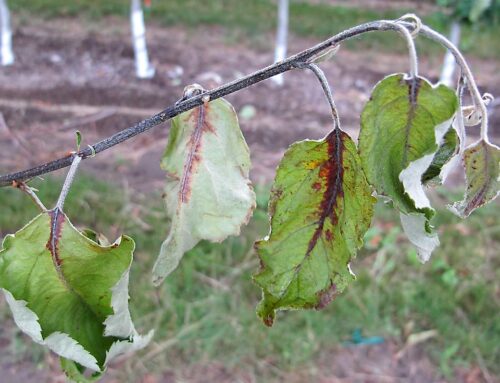
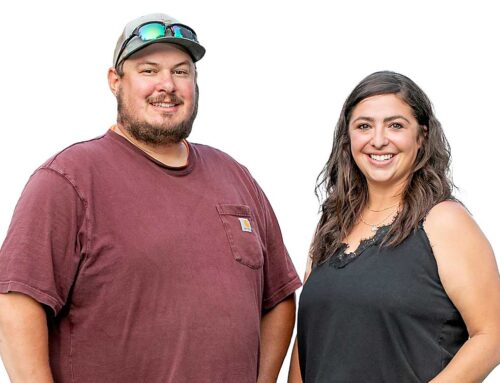
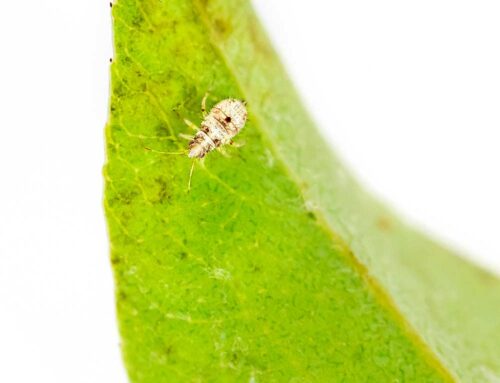
Congratulations to Ray. He is a true leader in the Pear industry. I am very proud to be able to call Ray a friend.